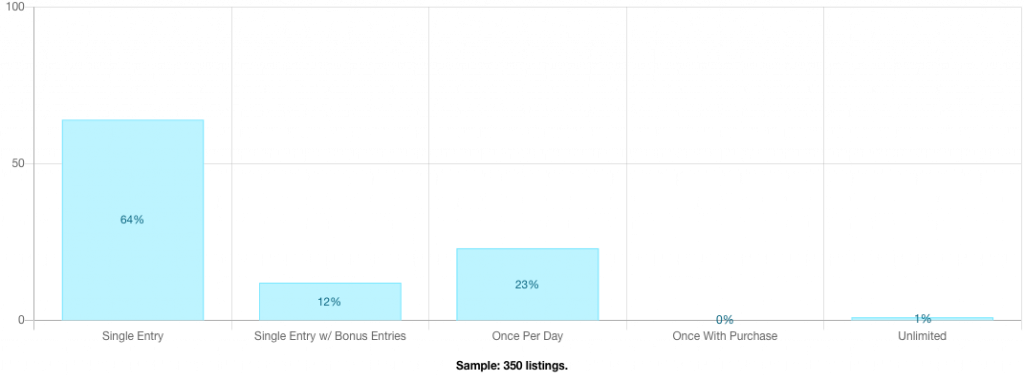
For sweepstakes entry limit, out of 350 promotions, 64% of brands allow single or one-time entry per participant.
There are a few reasons why you might want to consider only allowing one entry per person for your next sweepstakes.
One-Entry Sweepstakes Entry Limit
For one, it can level the playing field a bit. If everyone is limited to a single entry, then those who might be inclined to enter multiple times won’t have an advantage.
Participants see the single entry as fairer since everyone has the same chance of winning. It’s often perceived as less of a burden to entry. It provides the opportunity for the Sponsor to pre-qualify participants for sales leads by asking for additional information like questions about purchase intent or market research.
Additionally, it can help to keep your costs down. The more entries you have, the higher the cost of administering the sweepstakes will be. So, by capping it at one entry per person, you can keep things more affordable.
Drawbacks
Of course, there are also some drawbacks to this approach. For instance, it might discourage people from entering at all if they feel their odds are lower. On the other hand, while your prize may seem enticing to entrants, with a one entry sweepstakes, participants know that there is a much lower chance of winning due to the fact that there are so many people vying for a single prize.
The result? Your one-entry sweepstakes may lead to fewer entrants as people may feel they have lower chances of winning.
Conclusion
It’s up to you to decide what makes the most sense for your particular sweepstakes. But limiting entries to one per person is definitely something worth considering.
Ultimately, single or multiple entries depending on the objective of the promotion. For example, Sponsors seeking brand awareness may want as many people as possible to enter, while sponsors looking for sales want only the right target customers to enter.
Need help with sweepstakes or contest management or administration? Call 305-505-5393 or email us with your questions.

